What Is Omnichannel Customer Service? (2025 Guide)
Discover what is omnichannel customer service and learn how it creates seamless experiences that boost loyalty and grow your business.
November 24, 2025

Picture this: You start a conversation with a company through their live chat. Then you follow up by email. Finally, you call them. Each time, you have to explain your issue from scratch as if you're talking to a completely different company.
Frustrating? Absolutely.
This is exactly the problem omnichannel customer service solves. It's a strategy that connects every way customers can reach you (email, chat, phone calls, social media, you name it) into one seamless experience. The entire conversation flows naturally across channels with full context intact.
In this guide, we'll break down what omnichannel customer service actually means, why it matters more than ever in 2025, and how to implement it for your business (without needing a massive IT budget).
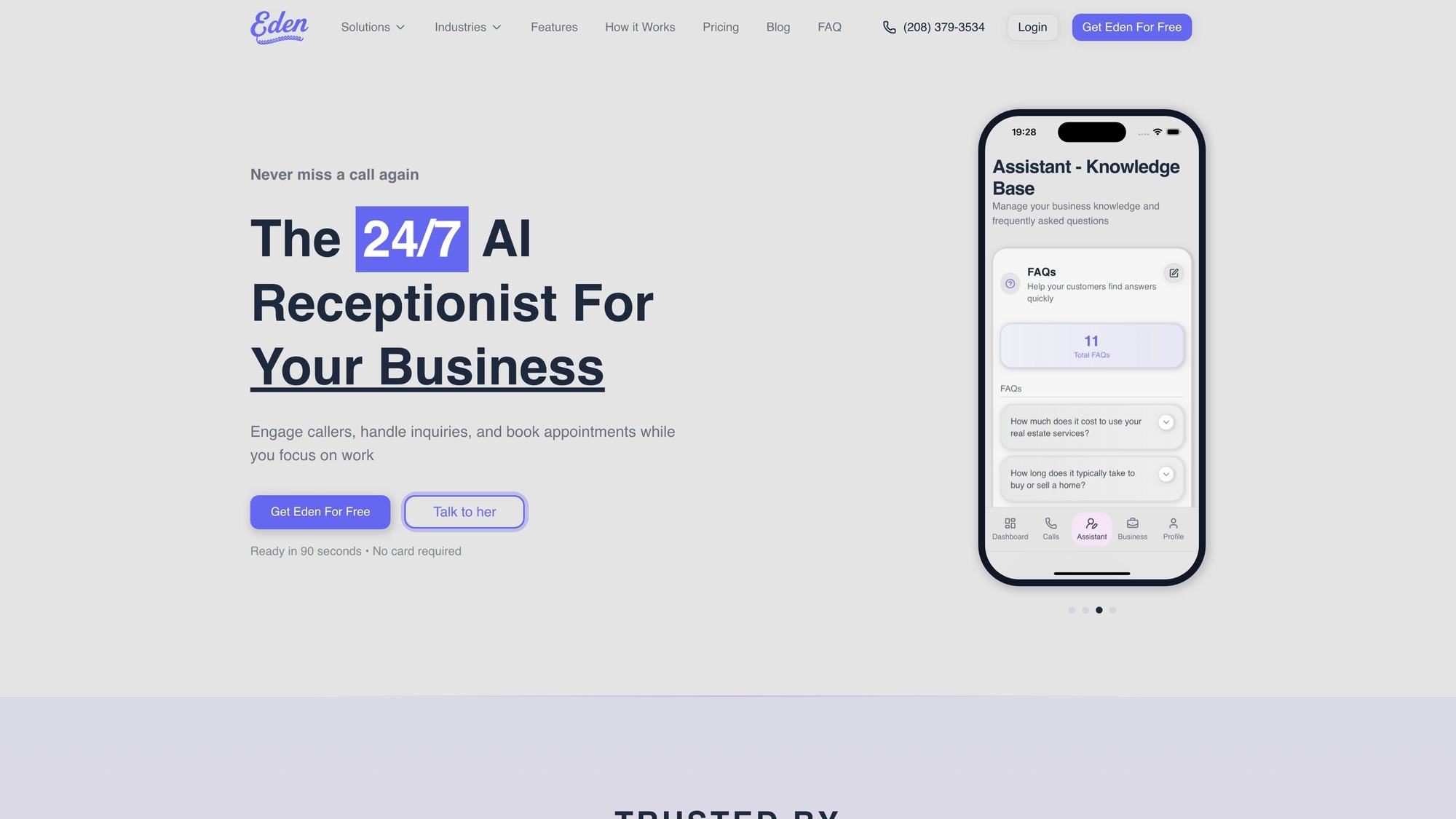
What Is Omnichannel Customer Service?#
Omnichannel customer service is providing support through a seamlessly integrated network of channels and touchpoints. Think of it as connecting all your customer communications (phone calls, SMS, email, live chat, social media, in-store interactions) so that context and data move with the customer from channel to channel.
The experience is consistent and continuous rather than siloed.
Omnichannel is defined as a "seamless and consistent way to sell, market, and help customers across all channels". What does this look like in practice?
You might start troubleshooting via web chat at work, switch to WhatsApp during your commute, and resolve the issue over a phone call at home. Throughout this journey, the support agent already knows your history and issue details.
Every interaction feeds into one unified customer conversation.
By contrast, many businesses today operate in a multichannel but disconnected way. Let's clarify what makes omnichannel different.
Omnichannel vs Multichannel vs Single-Channel#
The core difference between these approaches is whether channels are siloed or integrated.
| Approach | What It Means | Customer Experience |
|---|---|---|
| Single-Channel | Only one way to reach you (phone only, email only, etc.) | Simple but inflexible. Customers stuck with one option. |
| Multichannel | Multiple channels offered (phone, email, chat) but each operates in isolation | Customers have to repeat their story on each new channel. Context doesn't transfer. |
| Omnichannel | All channels are offered AND connected | Seamless experience. Conversation continues across channels with full context. |
The key insight: Multichannel means being "everywhere." Omnichannel means being everywhere in sync.
Research shows that in a multichannel scenario, a customer might have to start over when switching from a social media DM to a phone call. With an omnichannel approach, that customer's prior chat or DM is visible to the phone agent, who can pick up right where the conversation left off.

Omnichannel is inherently more customer-centric. It's not just about offering many channels. It's about making those channels work together as one.
Why Omnichannel Customer Service Matters#
Omnichannel service isn't a trendy buzzword. It delivers measurable benefits that directly impact your bottom line and customer loyalty.
Benefits of Omnichannel Customer Service for Customers#
No More Repeating the Same Story
According to research on omnichannel statistics, 56% of customers would no longer face the issue of repeating information due to disconnected channels.
When companies provide truly connected support, customer satisfaction (CSAT) rates climb as high as 67%, compared to just 28% under disjointed multichannel service.
That's a massive difference.
Faster Service (Because Context Is Already There)
When agents always have the full context, they resolve issues quicker without wasting time asking for details the customer already provided.
Companies report impressive improvements:
• 31% faster first-resolution time
• 39% decrease in customer wait time
Plus, customers get to reach out however is most convenient (text, social message, phone call) without being penalized for choosing one channel over another. Research indicates that 70% of consumers now prefer this kind of on-demand convenience from brands.
Personalized Interactions That Feel Human
With a unified view of the customer's history (past orders, previous support tickets, personal preferences), agents can deliver highly personalized service. The support feels tailored and consistent at every touchpoint.
Studies show that 73% of customers expect companies to understand their expectations and anticipate needs proactively. Omnichannel makes that possible by equipping agents with complete customer context across all channels.
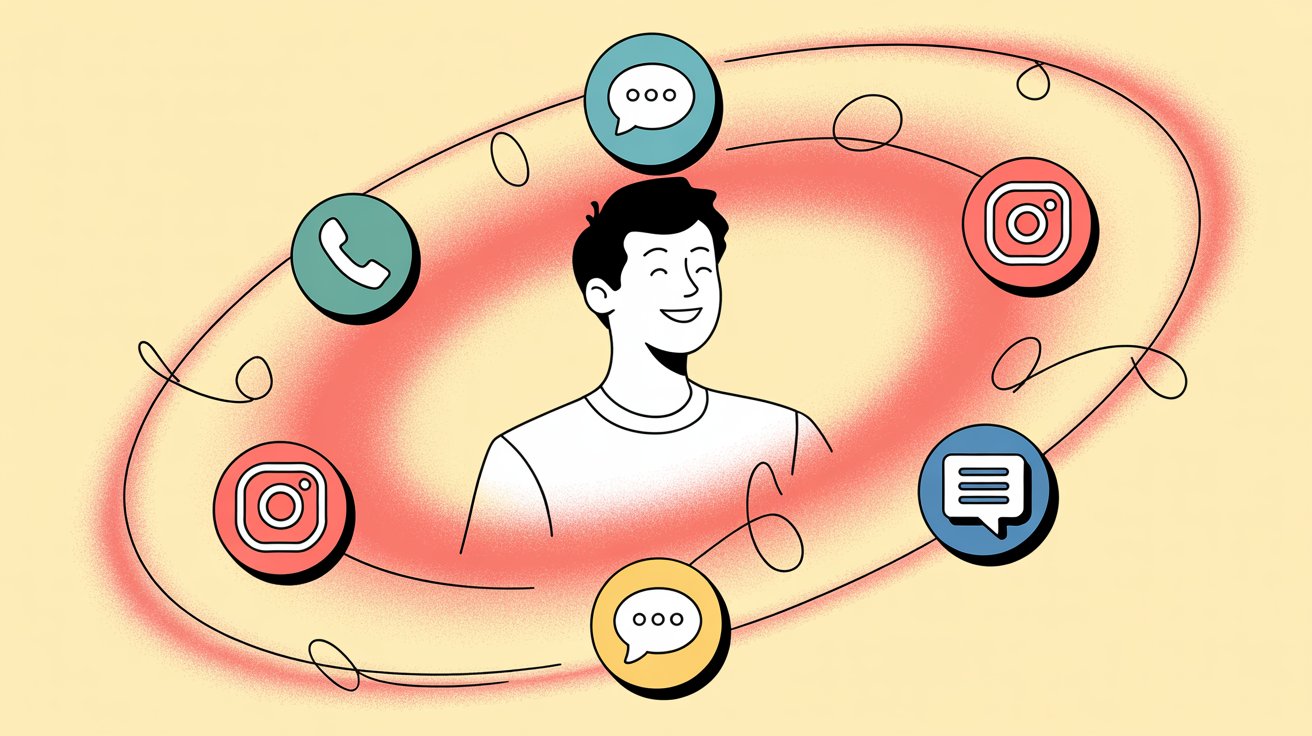
Higher Loyalty (Because Good Experiences Stick)
When someone can get help quickly, on their preferred channel, without repeating themselves, it creates a positive experience even if they had an issue to begin with. They feel valued and heard.
Research found that companies with strong omnichannel customer engagement retain on average 89% of their customers, compared to only 33% retention for companies with weaker omnichannel strategies.
In an era when 24% of consumers will stop buying from a brand after just one negative support incident, providing a painless, unified service journey is critical.
Business Benefits: Revenue, Efficiency & Growth#
More Productive Agents, Lower Costs
When agents can handle all channels from one unified workspace with all the info at their fingertips, they work more efficiently. They no longer waste time switching between siloed systems or asking repetitive questions.
Integrated omnichannel tools have been shown to lower service costs by up to 35% while slashing wait times.
Agents can solve issues faster (often in one interaction), meaning fewer resources spent per issue. When simpler queries are deflected to self-service or chatbots, human agents are freed up to tackle complex cases.
Direct Impact on Revenue
Better experiences don't just make customers happy. They make them spend more and stay longer.
| Metric | Impact |
|---|---|
| Overall sales increase | 5% to 15% |
| Customer lifetime value | 1.25x higher (multi-channel vs single-channel) |
| Customer loyalty improvement | 35% higher on average |
| Customer engagement | 45% saw improvement after adoption |
| Lifetime value increase | 46% saw rise after omnichannel |
Companies that implement omnichannel strategies have seen sales increases ranging from 5% up to 15% overall. Research also shows that customers who interact across multiple channels are at least 1.25x more valuable in terms of lifetime spend than single-channel customers.
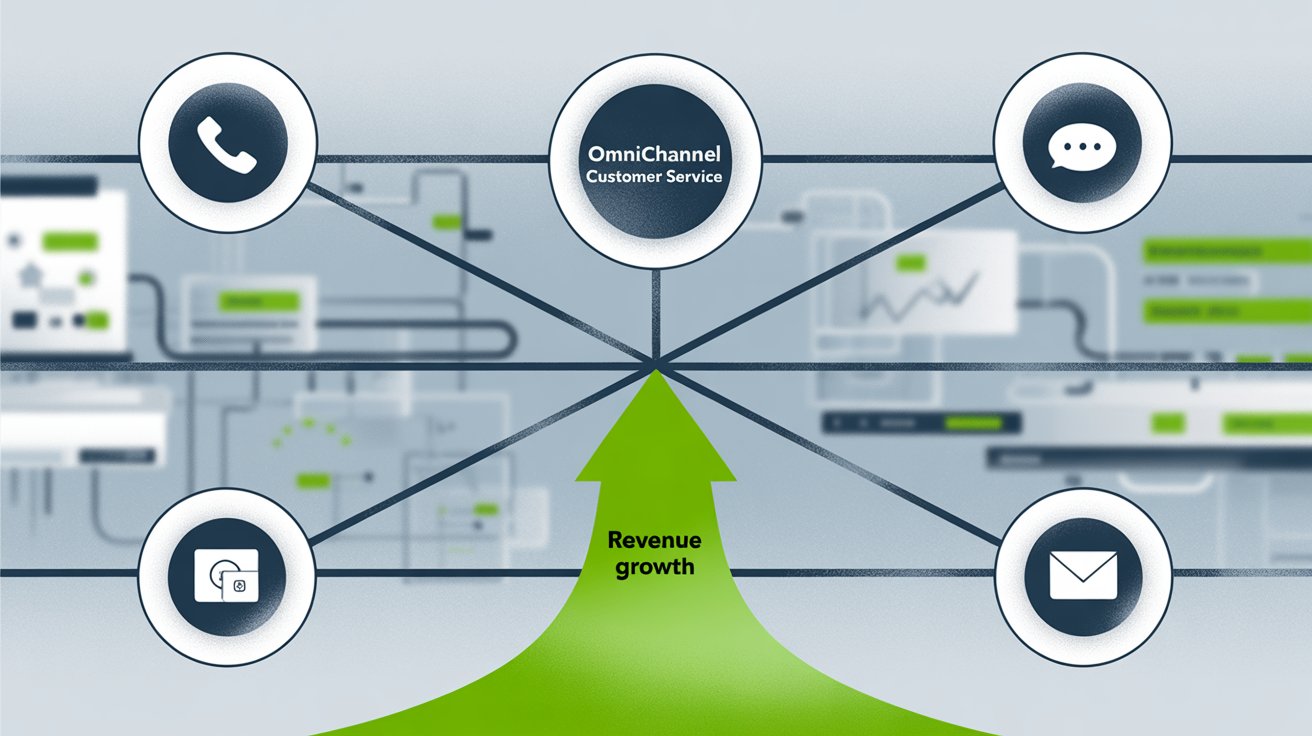
Unified Data Means Better Decisions
When all customer interactions flow through a connected system, businesses gain a 360° view of the customer journey. You can see patterns and pain points that were previously hidden in disconnected silos:
→ Product teams learn where customers struggle
→ Marketing sees which touchpoints lead to conversion
→ Support can identify recurring issues to fix proactively
Trends like spikes in queries on a new feature, or rising complaints after an update, are spotted faster when every channel's data is combined.
Stronger Brand Reputation
When people consistently get quick, helpful service whether they email, message on Facebook, or call, it reinforces your brand's reliability. You become known as a customer-centric company.
Research on customer expectations shows that consistency across channels is often cited as a top factor in whether customers trust a brand.
In summary: Omnichannel customer service creates a win-win. Customers enjoy faster, smoother, more personalized support. Businesses enjoy greater efficiency, insight, and revenue.
How to Implement Omnichannel Customer Service#
Implementing omnichannel customer service can be approached in clear steps. It's as much about strategy and process as it is about technology.
Here's how to build an omnichannel customer service strategy:
Step 1: Centralize Your Customer Data#
Start by unifying your customer information in one place.
A robust customer relationship management (CRM) system or similar customer database is essential. This acts as the single source of truth about your customers across all channels. Integrate your existing platforms (email, chat, phone, e-commerce) with the CRM so that every interaction logs in the same profile.
The goal is to achieve a 360-degree view of each customer.
When all the information is in one place, a CRM integrated with your call center and live chat might show that a caller is a VIP customer and what issues they've had in the past. Armed with that context, your team can prioritize and personalize their responses appropriately.
Centralizing data is the foundational step that enables everything else.
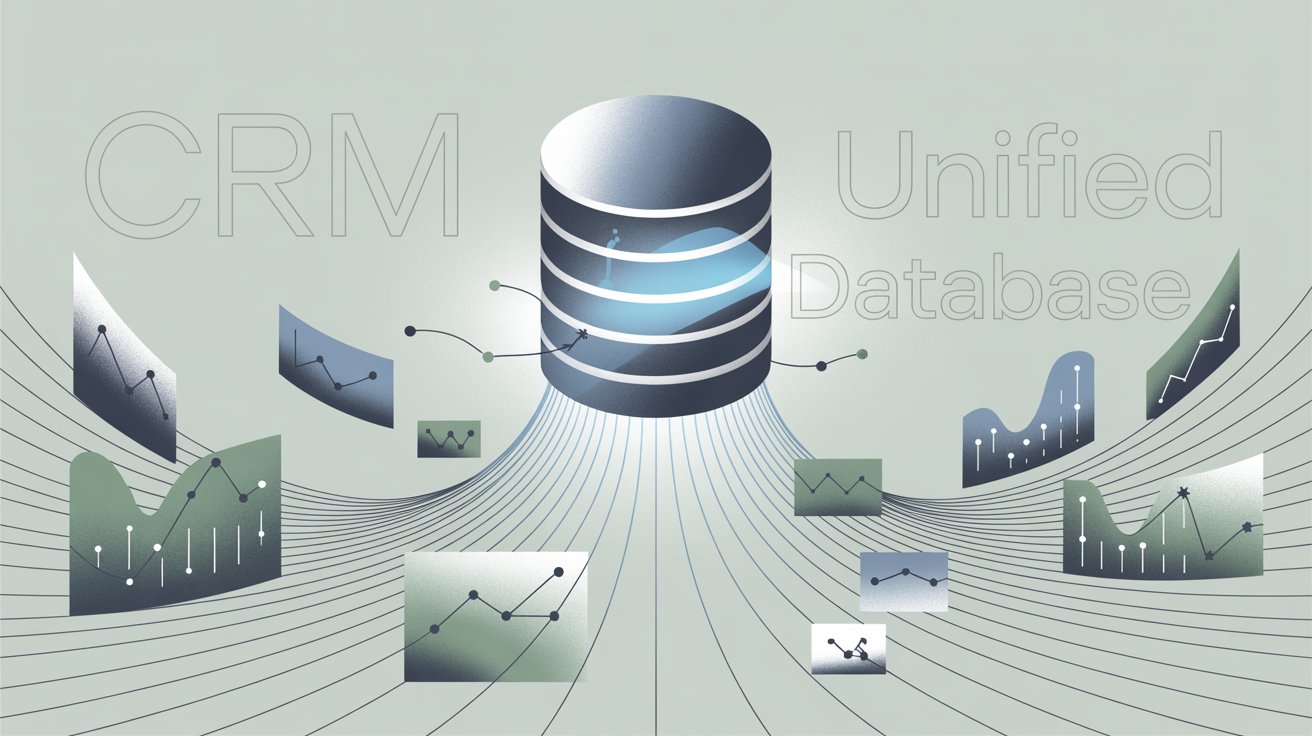
Step 2: Connect All Your Support Channels#
Once your data is centralized, ensure your channels are actually linked up.
This might involve adopting a unified omnichannel support platform or integrating your various communication tools. If you're using separate systems (one for phones, another for social media, another for chat), look for ways to tie them together.
A unified agent workspace is ideal: it allows agents to see and respond to conversations from any channel in one dashboard. This prevents agents from having to constantly switch apps or miss context.
When a conversation moves from, say, chat to phone, the transcript or notes from the chat are visible to the phone agent. Many modern customer service solutions offer omnichannel modules that can plug into your CRM.
An integration-first approach can be helpful if ripping out systems is a concern. You might keep your current helpdesk but add an integration layer so that tickets from email, chat, and social media all reference the same customer record.
The key is interconnectivity. Every channel should share data with the others.
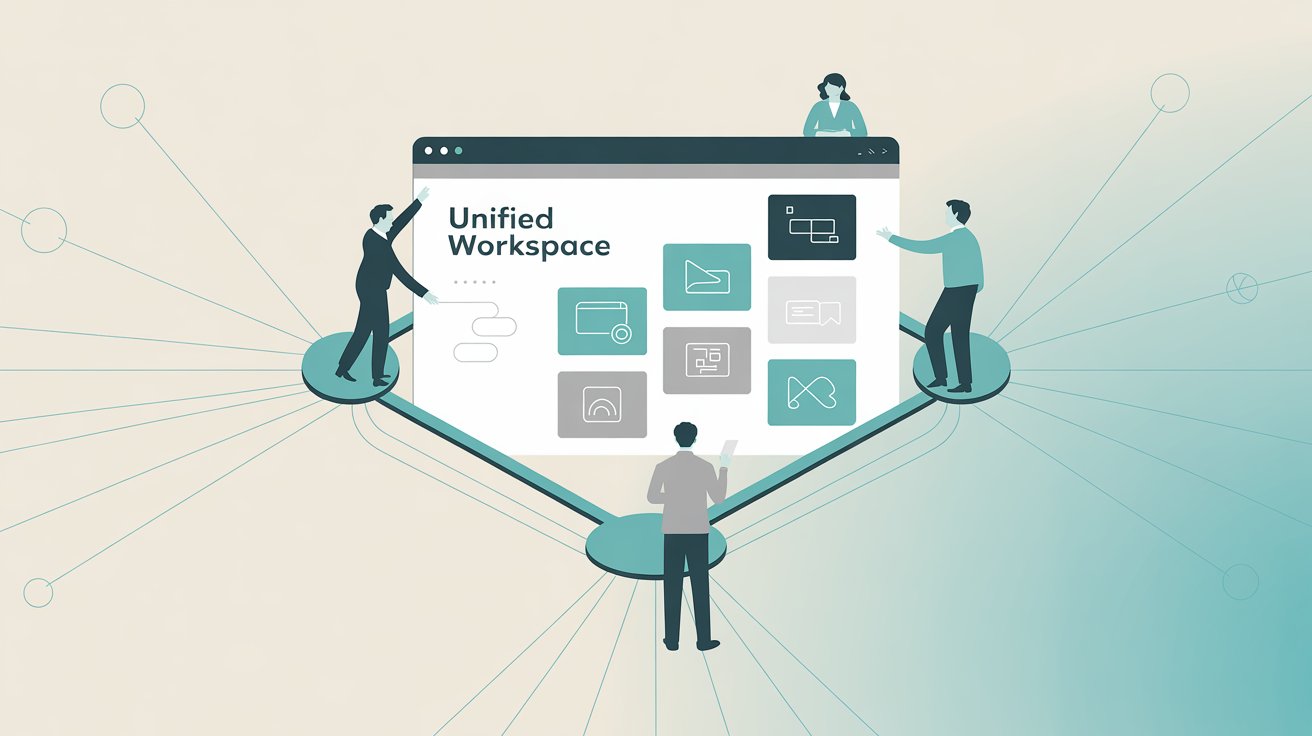
Step 3: Use AI to Scale Your Support#
As your support spans more channels, volume can increase. This is where AI and automation come in handy to maintain responsiveness without ballooning your team.
Deploy AI chatbots or virtual agents on common channels to handle routine inquiries 24/7. A chatbot on your website or Facebook Messenger can answer FAQs, help with order status queries, or initiate simple troubleshooting.
If the chatbot can't resolve the issue, it can seamlessly hand off the conversation (with full context) to a human agent. Customers get immediate help for simple stuff.
In fact, consumers are increasingly comfortable interacting with AI for service. 73% believe AI will improve customer service quality.
Consider an AI-powered phone receptionist as well. For businesses managing phone channels, tools like Eden can answer calls 24/7 with natural conversation, capture leads, and integrate seamlessly with your existing systems.
Eden's AI can transcribe and log call interactions into your CRM, ensuring that even traditional phone calls become part of your unified customer conversation.
AI-driven triage systems can automatically route incoming requests to the right department or priority queue. AI copilot tools can suggest reply drafts or surface knowledge base articles in real time.
The guiding principle is to use AI to make omnichannel support scalable and always-on. That way, a customer who messages you at midnight or on a holiday still gets service.

Step 4: Train Your Team for Omnichannel Support#
Technology alone won't make your service omnichannel. People and processes need to adapt too.
Invest in training your support agents to use the unified systems and to handle queries holistically. Agents should be encouraged to view the customer's entire journey and not just the single ticket at hand.
For instance, if an agent sees in the system that this same customer emailed yesterday about a related issue, they should proactively acknowledge that: "I see you reached out yesterday via email as well. Let me pick up from where you left off."
Update your support processes to remove channel-specific silos:
• Create a common triage queue regardless of entry channel
• Establish guidelines for when to seamlessly transfer a conversation from chat to phone (and how to do it without dropping the ball)
• Define team roles (consider hybrid agents who can handle multiple channels, versus separate teams for phones and email)
Omnichannel is a team sport. Customer service, sales, marketing, and even in-store staff should share knowledge and coordinate. Your marketing might promise quick support via Twitter DMs. Your support team needs to be ready to deliver on that.
Regularly communicate and update a unified support playbook that covers all channels.

Step 5: Track Metrics and Keep Improving#
As you roll out omnichannel support, continuously track how it's performing and make adjustments.
Key metrics to track:
① Resolution time per channel
② First contact resolution rate
③ Customer Satisfaction (CSAT) scores across channels
If you're truly omnichannel, you should see certain gaps shrink. If chat was super fast but email was slow, those should start to converge as processes unify. Monitor whether customers are actually using the new channels you've opened. Pay attention to customer feedback.
You can send follow-up surveys like "How satisfied were you with our service?" regardless of channel to ensure quality is high everywhere.
Track channel switching incidents (cases where customers had to use multiple channels for one issue). Ideally, those should go down in an omnichannel environment. When they do happen, they should result in a smooth handoff.
If you find issues (say, live chat handoffs to phone are dropping context), dig in and fix the process or technical integration causing it.
Keep an eye on which channels customers are gravitating towards and be ready to evolve. Maybe you find more customers prefer WhatsApp than traditional SMS over time. You might invest more in that channel's experience.
The crux: Treat omnichannel as an ongoing strategy, not a one-time project. Customer expectations will keep changing, and new channels will emerge.
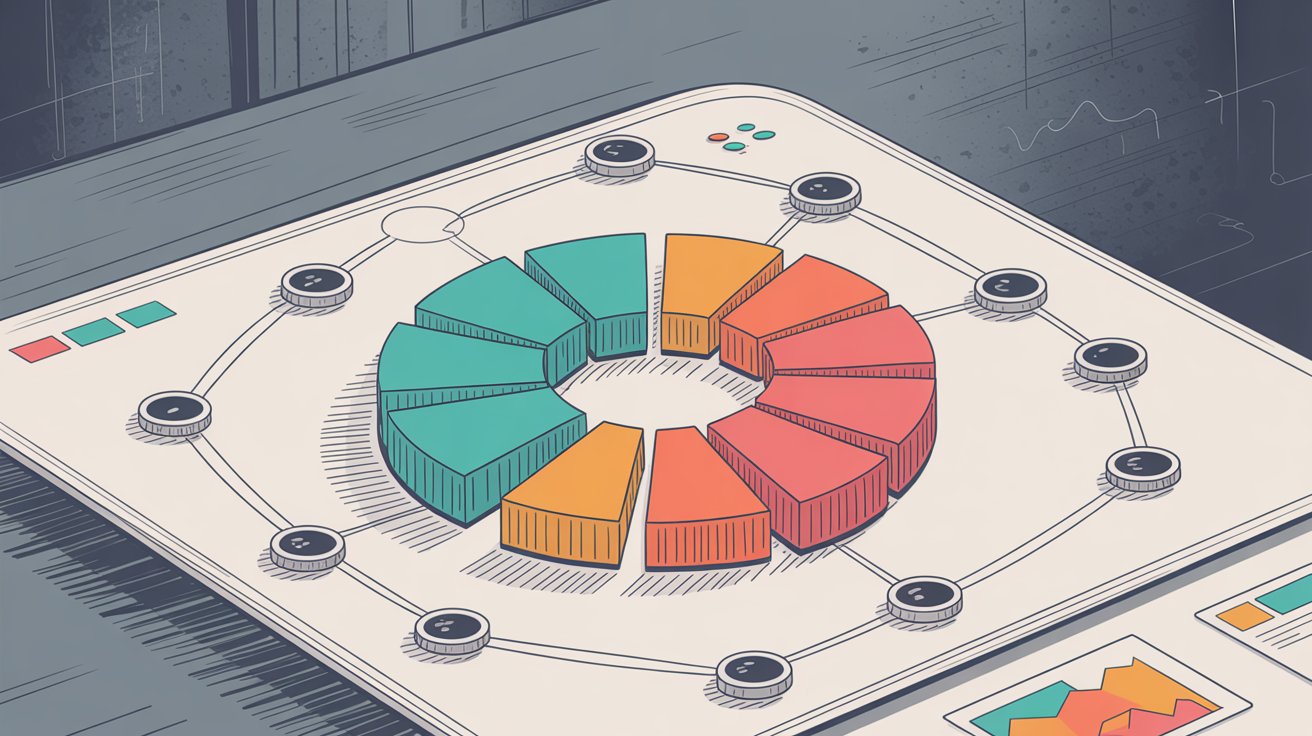
Common Omnichannel Customer Service Challenges#
Implementing an omnichannel customer service strategy isn't without its challenges.
Being aware of these common pitfalls can help you avoid them.
Challenge: Data Silos Breaking the Experience#
The problem: If your channels aren't sharing information, you'll end up with inconsistent answers and a disjointed experience despite your intentions.
If your Twitter support agents use a different FAQ document than your call center reps, customers might get conflicting information.
How to avoid it: Invest in that single source of truth (central knowledge base and CRM). Make sure all channels pull from the same customer data and knowledge repositories.
This may involve syncing databases or adopting a unified knowledge management tool. Regularly update content in one place and have it reflect everywhere. Many companies start by unifying their FAQs and help center content, then training every channel (and chatbot) on that content.
Challenge: Team Resistance to Change#
The problem: Omnichannel often requires different teams (support, IT, marketing, sales) to work together more closely than before.
Internal silos or lack of buy-in can stall your efforts. A retail store team might be used to handling in-person issues separately from the call center, and may resist using a shared system.
How to avoid it: Secure executive support to drive a customer-centric culture where departments are rewarded for collaboration.
Provide training and communicate the why. Explain to all employees how omnichannel improves customer satisfaction and how that benefits the company (and them).
Start with small cross-functional projects (like a joint social media support initiative between marketing and customer care) to build trust. Set up channels for teams to easily share customer insights with each other.
When everyone sees the positive impact (like fewer angry customers or less duplicate work), resistance usually fades. Highlight successes to the whole company when an omnichannel approach pays off ("Look, our new unified support system helped increase our CSAT by 10 points!").
Challenge: Complex Technology Integration#
The problem: One fear businesses have is that adopting omnichannel means an expensive, risky overhaul of all systems.
If done haphazardly, tech integration can indeed get complicated.
How to avoid it: Take an incremental, integration-first approach rather than a big-bang overhaul.
Many modern support solutions have plug-and-play integrations or API connectors (for example, linking your voice system with your CRM, or your social media inbox with your helpdesk). Leverage these to add on channels one by one. Test each integration thoroughly in a sandbox or pilot program to iron out issues.
If you're not technically savvy, working with a consultant or using middleware (like integration tools) can simplify connecting different apps.
Prioritize integrations that yield the most obvious benefit first. For instance, connecting your phone support with your CRM (to automatically log calls and transcripts) might be a high-impact first step.
Once that's running smoothly, then integrate chat, then social, and so on. This phased approach prevents the project from becoming overwhelming.
Remember: Done is better than perfect. Don't wait for an ideal all-in-one system if you can make progress by connecting two systems today.

Challenge: Maintaining Quality Across All Channels#
The problem: When you introduce new channels or automation, there's a risk that quality of support might drop on some channels.
You might deploy a chatbot that isn't fully trained, leading to customer frustration. Your new WhatsApp support isn't as fast as your phone support used to be.
How to avoid it: Monitor each channel's performance and customer feedback closely, especially in the early stages.
Provide additional training or staffing for channels that see spikes in volume. Ensure your service level goals (like response time targets) are defined for each channel and track if you're meeting them.
Roll out new channels to a subset of customers or with limited functionality first, and gather feedback. Continuously refine your chatbot scripts and AI training based on real interactions.
Empower your agents to flag any systemic issues ("we're getting a lot of confused customers on chat; maybe the interface or instructions need improvement").
The idea: Ensure that adding channels doesn't come at the cost of support quality. Every channel should uphold your brand's standard of customer care.
If a channel consistently underperforms and you can't improve it, consider pausing it. Better to do fewer channels well than to do many poorly.
Omnichannel Customer Service Examples#
To make this concrete, let's look at a couple of real-world examples where omnichannel customer service shines.
Example: Starbucks Omnichannel Experience#
Starbucks is often cited for its omnichannel customer experience.
A customer can use the Starbucks mobile app to reload their card or place an order, then pick it up in-store. Later if there's an issue (say, a wrong charge), they can contact support via phone or Twitter. At each point, the customer's profile and purchase history are connected.
The mobile app, website, in-store POS, and customer service channels all share data. This means a barista or support agent can see the customer's past orders and loyalty status instantly, providing personalized service (like re-making a drink or refunding via the app) without the customer having to dig up receipts.
The experience feels like dealing with one unified Starbucks, not separate departments.
Example: Amazon Customer Service Integration#
Amazon has mastered omnichannel service in a slightly different way.
If you have an issue with an Amazon order, you can start a chat on the website, switch to a phone call, or use their mobile app's support. Amazon's system keeps track of your issue across these channels.
Ever notice how if you call Amazon's support number, it already knows which order you're likely calling about? That's omnichannel data integration at work. Also, Amazon often reaches out via email to follow up on support issues or allows SMS updates for delivery problems. All these interactions get logged under your account.
The result: You rarely have to explain things twice, and any agent can quickly get up to speed on your case.

Example: Small Business Banking Integration#
Consider a regional bank offering an omnichannel customer service experience.
A customer might begin by inquiring about a loan on the bank's website chat. The inquiry is recorded in the bank's CRM. The next day, the customer visits a branch. The in-branch banker can pull up the chat transcript and knows what information the customer already received.
Later, the customer calls the bank's phone support for a follow-up question. The phone agent sees notes from both the website chat and the branch visit, so they answer with full context. The customer also receives an email summary of the loan options discussed, which they could reply to with further questions.
In this scenario, the bank combined online, in-person, phone, and email into one cohesive continuum. Even though the customer interacted through four different channels, the experience felt like one ongoing conversation with the same company.
This level of consistency greatly improves trust.
Real Results from Omnichannel Implementation#
Companies leveraging omnichannel have reported impressive results.
| Company | Implementation | Results |
|---|---|---|
| Kaizen Gaming | Unified Messenger, WhatsApp, and Telegram | 95% first-contact resolution rate |
| BoxyCharm | Integrated email with social media DMs | 17% boost in CSAT scores |
| Tile | Unified omnichannel support (since 2013) | 40% reduction in ticket handle time, 14% increase in satisfaction |
| Squarespace | Consolidated multiple platforms into single solution | 95% CSAT score achieved |
After implementing an omnichannel platform to unify channels like Messenger, WhatsApp, and Telegram, gaming company Kaizen Gaming achieved a 95% first-contact resolution rate.
When beauty subscription retailer BoxyCharm integrated email with social media DMs and other channels, they saw a 17% boost in their CSAT scores.
Since 2013, Tile has used unified omnichannel support to cut ticket handle time by 40% and bump customer satisfaction by 14%.
Squarespace achieved a stunning 95% CSAT score after consolidating multiple support platforms into a single omnichannel solution.
These are the kinds of wins that are possible when everything is connected.
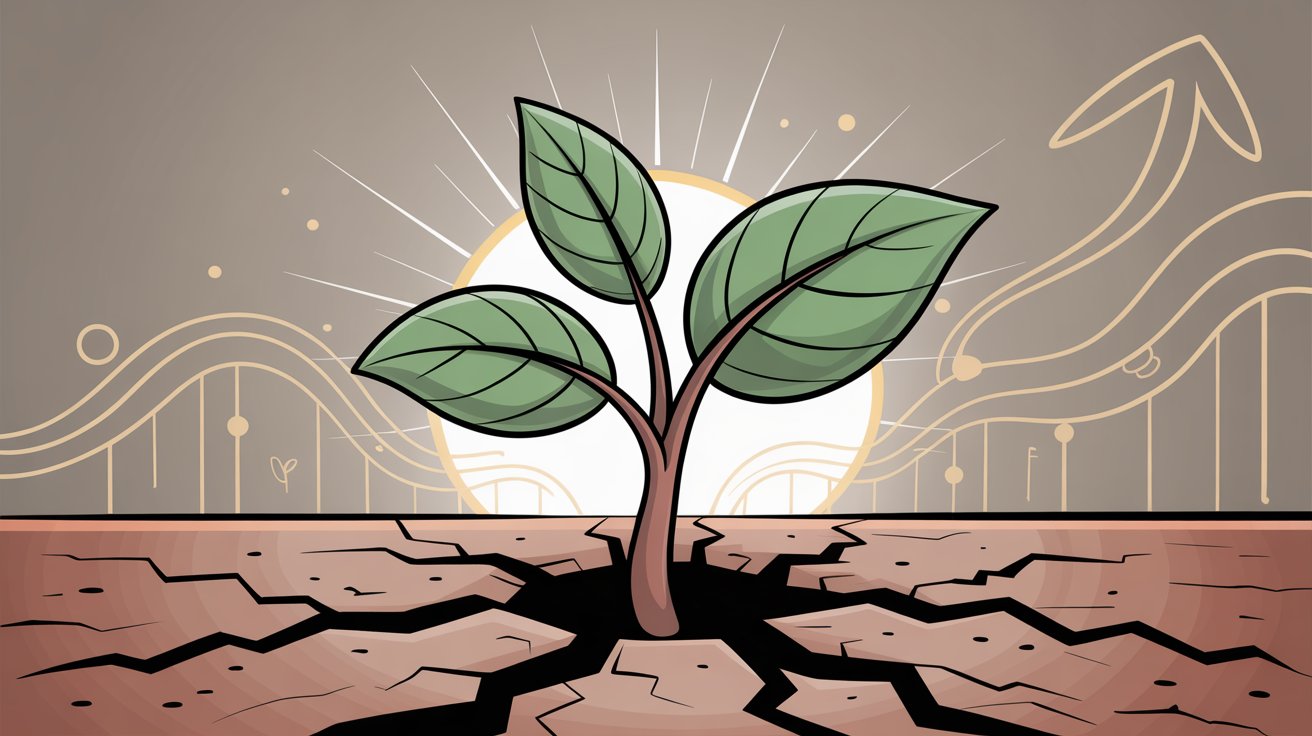
The Future Is Omnichannel Customer Service#
Omnichannel customer service has quickly moved from a cutting-edge idea to an expected standard.
In 2025 and beyond, customers will only demand more seamlessness. They'll expect that a tweet to a company gets the same level of attention and context as a phone call. They'll expect that switching from a mobile app chat to a desktop browser chat is a fluid handoff.
Businesses that lag on this front risk losing customers to those that deliver unified experiences.
Remember, a significant portion of consumers will walk away from a brand after a single bad support experience. Consistency and convenience are no longer optional luxuries. They are competitive necessities.
Getting Started Without a Huge Budget#
The good news is that achieving omnichannel service is more feasible than ever, even for small and mid-sized businesses.
Cloud software, APIs, and AI-driven tools have lowered the cost and complexity of integration. You don't need a massive IT department to connect your channels.
For example, Eden allows businesses to seamlessly integrate the voice channel into an omnichannel strategy. Eden's AI can answer phone calls 24/7 and then transcribe and log those call interactions into your system, so they carry over to your email or CRM records.
It can even follow up with callers via text or email, bridging that gap between voice and digital. Tools like this ensure that even traditional phone calls (often the last silo in customer service) become part of the unified customer conversation.
In other words, no channel gets left behind.
Start Small and Build From There#
If you're just starting out, focus on the principles we discussed:
• Connect your data
• Meet customers where they are
• Ensure consistency above all
Even small improvements (like enabling your support team to see email and chat inquiries together) can make a noticeable difference. Over time, you can add more channels and more integration.
Omnichannel success is a journey, not an overnight switch.
Final thought: Customers want to be heard and helped without hassle, whenever and however they reach out. Omnichannel customer service is how we fulfill that want. It's about delivering help (fast, personalized, and on the customer's terms) and doing so consistently across every channel.
Businesses that master this will thrive in building trust and loyalty in the years ahead.

FAQs: Omnichannel Customer Service Questions#
What's the main difference between omnichannel and multichannel customer service?#
Multichannel means you offer multiple ways for customers to contact you (phone, email, chat, social media), but each channel operates independently. Customers often have to repeat their information when switching channels.
Omnichannel means all those channels are connected and integrated. Customer data, conversation history, and context flow seamlessly between channels. A customer can start a conversation on one channel and continue it on another without repeating themselves.
Think of multichannel as having many doors into your business, but each leads to a different room. Omnichannel is having many doors that all lead to the same connected space.
Do small businesses really need omnichannel customer service?#
Yes, especially in 2025.
Customers expect seamless experiences regardless of your business size. Research shows that 24% of consumers will stop buying from a brand after just one bad support experience.
Small businesses can actually benefit more from omnichannel because it allows you to do more with fewer resources. When your channels are connected, you can handle more customer interactions without hiring a larger team.
Tools like Eden make it affordable for small businesses to integrate AI-powered phone answering into their omnichannel strategy, ensuring no calls are missed and all interactions are logged in one place.
What channels should I include in my omnichannel strategy?#
Start with the channels your customers actually use to contact you. Common channels include:
• Phone calls (still the preferred channel for many customers, especially for complex issues)
• Email (for detailed inquiries and documentation)
• Live chat (for quick questions while browsing your website)
• Social media (Facebook Messenger, Instagram DMs, Twitter/X)
• SMS/Text messaging (for updates and quick responses)
• In-person (if you have physical locations)
Don't try to be everywhere at once. Start with 2-3 key channels and ensure they're well-integrated before adding more. The goal is quality connections, not quantity of channels.
How much does it cost to implement omnichannel customer service?#
The cost varies widely depending on your business size and needs.
For small businesses, you can start with affordable cloud-based solutions (many CRM platforms offer omnichannel features starting at $50-100/month per agent).
Larger enterprises might invest tens of thousands in custom integrations and enterprise software.
The good news: You don't need to overhaul everything at once. Many businesses start by connecting just two channels (like phone and email) and build from there.
Tools like Eden offer plans starting at $39/month for AI phone answering, making it accessible even for very small businesses to integrate voice into their omnichannel strategy.
Focus on the ROI. Companies report cost reductions up to 35% after implementing omnichannel, plus revenue increases from better customer retention.
How do I train my team for omnichannel support?#
Training for omnichannel support involves several key areas:
Technical training: Ensure your team knows how to use the unified platform. They should be comfortable navigating between channels, accessing customer history, and logging interactions properly.
Mindset shift: Help agents understand they're managing customer relationships, not just individual tickets. Encourage them to view the customer's entire journey across all channels.
Process training: Establish clear guidelines for when and how to transfer customers between channels (for example, when to escalate from chat to phone).
Empathy and context: Train agents to reference previous interactions naturally ("I see you reached out via email yesterday about this. Let me help you with that.").
Start with pilot groups, gather feedback, and refine your training. Make it ongoing, not a one-time event.
What metrics should I track for omnichannel customer service?#
Key metrics to measure omnichannel success include:
| Metric | What to Measure | Target/Benchmark |
|---|---|---|
| Customer Satisfaction (CSAT) | Consistency across all channels | Should be uniform regardless of channel |
| First Contact Resolution (FCR) | Issues resolved in one interaction | Should increase with omnichannel |
| Average Resolution Time | Time to solve customer issues | Should decrease as agents have better context |
| Channel Switching Rate | Customers using multiple channels for one issue | Should decrease over time |
| Customer Effort Score (CES) | Effort customers expend to get help | Lower is better |
| Agent Productivity | Tickets handled per agent | Should increase with unified tools |
| Customer Retention Rate | Percentage of customers retained | 89% average for strong omnichannel |
Track these metrics before and after implementing omnichannel to measure your ROI.
Can AI and automation work in an omnichannel strategy?#
Absolutely. In fact, AI is often essential for making omnichannel support scalable.
AI chatbots can handle routine inquiries 24/7 on multiple channels (website chat, Facebook Messenger, WhatsApp). When they can't resolve an issue, they seamlessly hand off to human agents with full context.
AI phone systems like Eden can answer calls, capture lead information, schedule appointments, and log everything in your CRM. This ensures phone calls are integrated into your omnichannel strategy.
Research shows that 73% of consumers believe AI will improve customer service quality.
The key is to ensure your AI tools are connected to your central customer database, so interactions with AI are logged just like human interactions. This way, when a customer moves from AI to a human agent, there's no loss of context.
How long does it take to see results from omnichannel customer service?#
Many businesses see initial improvements within weeks of connecting their first channels:
• Immediate: Faster agent access to customer information
• 1-3 months: Noticeable improvements in customer satisfaction and agent efficiency
• 3-6 months: Measurable impact on customer retention and revenue
Research found companies achieved 31% faster first-resolution time and 39% decrease in customer wait time after integrating their support channels.
The timeline depends on your starting point and how thoroughly you integrate. Start small, measure results, and build on early wins.
Remember, omnichannel is an ongoing strategy, not a one-time project. Continuous refinement will yield better results over time.
Ready to Transform YourCustomer Experience?
Join hundreds of businesses using Eden AI to handle calls, book appointments, and provide 24/7 customer support.